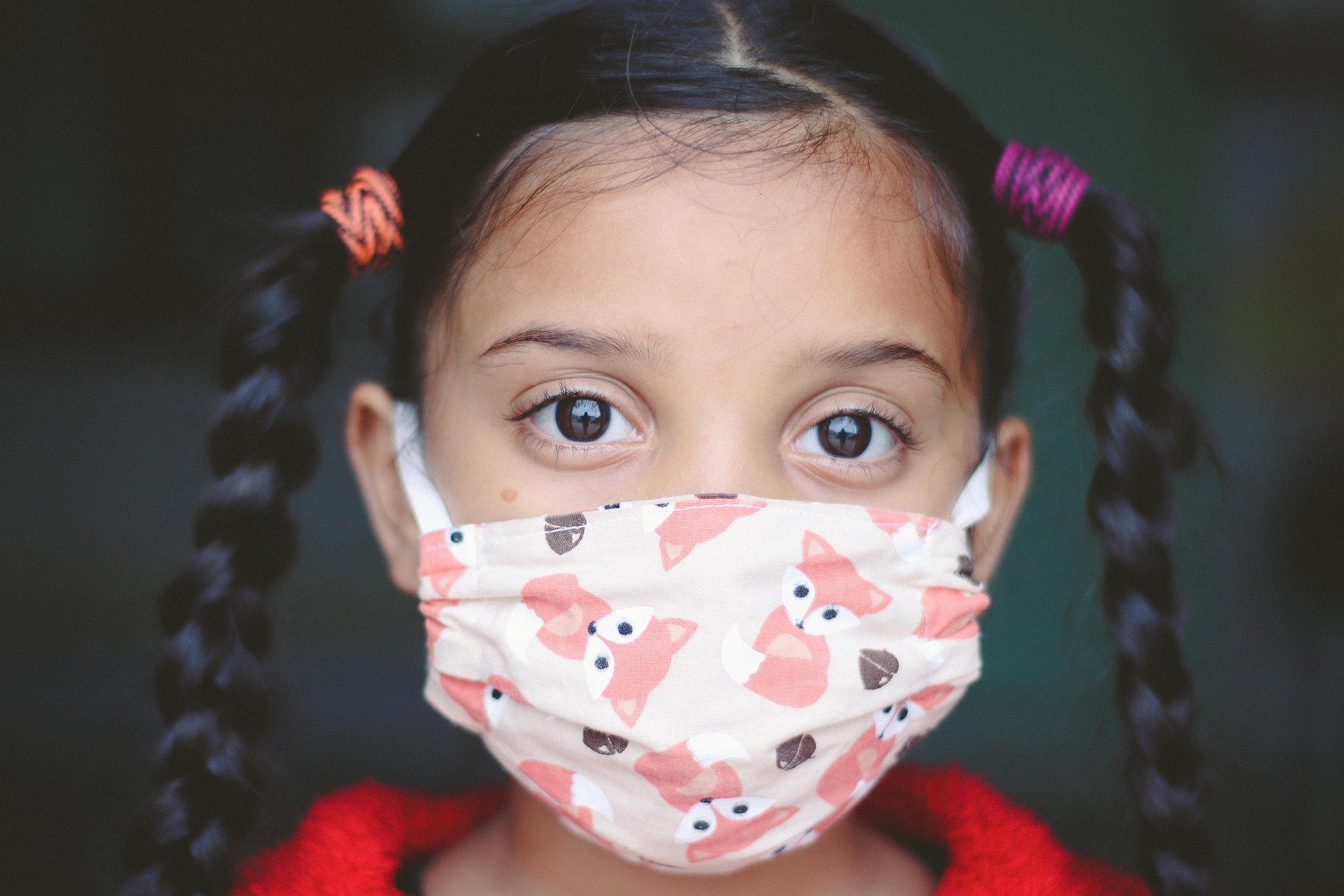How Dangerous is Delta for K-12 Students?
More than 180,000 children have caught COVID over the past month, but the risk of severe disease appears to still be rare.

One bright spot throughout the pandemic is that COVID-19 has, for the most part, been less likely to cause severe disease in children. That’s part of what has driven a push to get the majority of U.S. K-12 students back into physical classrooms full time.
However, with the current uptick in cases being driven by the highly contagious Delta variant and the number of children contracting the virus on the rise, new questions are emerging about the way this virus impacts and spreads from children.
For answers, we turned to experts at the St. Jude Children's Research Hospital, Yale School of Public Health, and Johns Hopkins Bloomberg School of Public Health.
How dangerous is COVID for children?
“It seems like kids are at lower risk of getting infected,” says J. Lucian Davis, MD, MAS, at Yale School of Public Health. “They’re at a lower risk of developing more severe illnesses, such as getting hospitalized, and a very low risk of death.”
According to the CDC, while more than 623,000 Americans have died from COVID-19 since January 2020, only 385 of those deaths have been among those 17 or younger, less than half the number who have died of pneumonia in the same time period. The risk of death for children from COVID is just 0.01, or 1 in 10,000, while the risk of hospitalizations is 0.8.
“Overall, that's a really good story,” Davis says. “I think the thing that's confused people is why that is. Is it something inherent to kids? Is it something in terms of their immune systems, their behaviors? Is it something about the virus? That the why is still not really clear.”
Is the Delta variant more dangerous for children than previous ones?
This is not clear. According to data compiled by the American Academy of Pediatrics, there were 180,000 COVID cases in children during the week ending August 19. This marks a four-fold increase from a month earlier and brings levels in children to what was seen in the winter surge of 2020-21.
Tools and ideas to transform education. Sign up below.
This increase in cases has also led to hospitalizations. An average of 303 children per day were admitted to hospitals with COVID in the U.S. during the week that ended August 22, according to the CDC.
This does not necessarily mean Delta is more virulent in children than previous strains, as the rising number could be due to increased infectiousness.
“It's a matter of math,” says Diego R. Hijano, MD, MSc, an infectious disease specialist at St. Jude Children's Research Hospital. “The more cases you have, the more hospitalizations. And with the more hospitalizations you have, the more possibilities of somebody getting very sick. The more they get very sick, the more that could die.”
Initially after the Alpha strain emerged (first identified in the United Kingdom), there were also worries that it was making children more sick. As more data became available that proved not to be the case -- it was just more contagious than the original strain. It’s too early to say for sure, but that appears likely to be the case with Delta as well.
How does COVID compare to the flu in children?
So far, the risk of death from COVID is comparable to that from flu for children, but Hijano warns against taking the comparison too far as there are still so many unknowns about COVID. He notes that COVID is not merely a respiratory virus; there are more complications from COVID in children and recovery times are generally longer. There is also the risk of long COVID, which can occur in children, though it appears to be less common than in adults.
Another difference is in the way flu and COVID spread through schools. “COVID probably is more infectious than influenza,” Davis says. “A lot of influenza epidemics are amplified in schools. And there's a lot of studies that look at school closures and they seem, at least in modeling studies, to be very effective at preventing the spread of flu in the communities and affecting older and more vulnerable individuals.”
However, schools don’t seem to be a big source of COVID spread, or at least they were not pre-Delta. During the 2020-21 school year, mitigation efforts were mostly successful at limiting the spread of COVID within schools.
Are children less contagious?
Last year in schools, children were less likely to spread the virus than adults. “When a kid tested positive it didn't usually turn out to spread to other kids or adults, but when an adult was the one who tested positive, there was some spread of the virus to other adults,” Hijano says.
Whether that was due to children being better at adhering to mitigation efforts within schools or because they are inherently less contagious is still uncertain. “The best way that people try to understand this is by looking at studies in households,” Davis says. “If one person in a household is infected, and you go and do contact tracing and see what happens to the other people in the household. How often does another person get sick?”
In general, studies conducted prior to Delta and vaccination availability show that between 10 and 20 percent of people in a household get infected after the initial infection. “There's some studies that suggest that maybe kids would be at a lower rate,” Davis says.
It's possible, he says, that because kids are smaller, they are less likely to propel as many aerosols around a room when they sneeze. “I wouldn't be surprised if kids have a lower risk of spreading it,” he says.
What can parents and teachers do to limit spread?
In addition to vaccination, masking, distancing, and improved ventilation, students and educators should be particularly vigilant during risky portions of the school day, such as lunch and snack time, says Tamar Mendelson, PhD, director for the Center for Adolescent Health at the Johns Hopkins Bloomberg School of Public Health. “Make sure to the extent possible that there's a lot of care taken during those times that kids would not be infecting one another and teachers, and vice versa,” she says.
Educators and parents should also remember that the virus is evolving and we need to be vigilant and continue to reassess risks. “I don't think we can be complacent,” she says. “Originally there was a sense that COVID is just not going to affect kids as much and we don't need to be as worried about that, and I don't think we can continue to just assume that's the case.”
Erik Ofgang is a Tech & Learning contributor. A journalist, author and educator, his work has appeared in The New York Times, the Washington Post, the Smithsonian, The Atlantic, and Associated Press. He currently teaches at Western Connecticut State University’s MFA program. While a staff writer at Connecticut Magazine he won a Society of Professional Journalism Award for his education reporting. He is interested in how humans learn and how technology can make that more effective.

